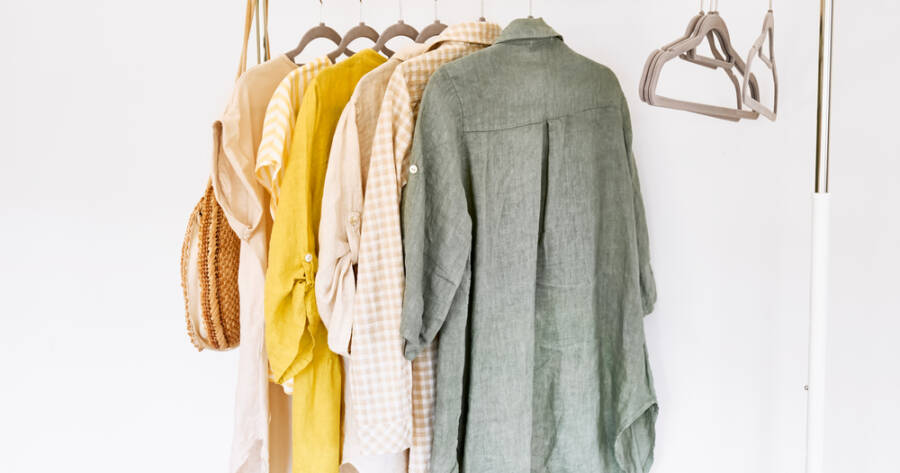The fashion industry has long been driven by rapid production cycles and ever-changing trends, but a growing movement is challenging this disposable mindset. Slow fashion prioritizes sustainability, ethical production, and mindful consumption, offering an alternative to the wastefulness of fast fashion. By choosing high-quality, long-lasting clothing and supporting ethical brands, consumers can reduce environmental impact and promote fair labor practices. Conscious shopping isn’t just a trend—it’s a shift toward a more sustainable and responsible future for fashion.
The Problem with Fast Fashion
Fast fashion brands thrive on mass-producing cheap, trendy clothing that is designed to be discarded after just a few wears. While this business model keeps prices low, it comes with significant hidden costs, both environmentally and socially.
The Environmental Toll:
- The fashion industry produces 92 million tons of waste annually, with much of it ending up in landfills.
- Textile dyeing is the second-largest polluter of clean water globally, contributing to toxic wastewater.
- Fast fashion brands rely on synthetic fabrics like polyester, which shed microplastics into oceans with every wash.
The Human Cost:
- Many fast fashion brands outsource production to low-wage countries, where workers face unsafe conditions and unfair wages.
- The 2013 Rana Plaza collapse in Bangladesh, which killed over 1,100 garment workers, exposed the harsh realities of exploitative labor in fashion manufacturing.
- Consumers pay low prices, but garment workers often earn less than a living wage, trapped in cycles of poverty.
Fast fashion’s low-cost convenience comes at a steep price, making the shift to slow fashion more urgent than ever.
What Is Slow Fashion?
Slow fashion is the opposite of fast fashion, focusing on sustainability, ethical production, and thoughtful consumption. Instead of mass-producing low-quality garments, slow fashion brands prioritize:
- Ethical labor practices: Fair wages, safe working conditions, and transparency in production.
- Sustainable materials: Organic cotton, linen, hemp, and recycled fabrics that minimize environmental harm.
- Quality over quantity: Well-made clothing designed to last for years, rather than weeks.
By investing in timeless, durable pieces, consumers can build a wardrobe that is both stylish and sustainable.
Sustainable Fashion Brands Leading the Way
Many brands are embracing slow fashion principles, proving that style and sustainability can coexist.
Ethical and Sustainable Brands to Support:
- Patagonia: A leader in environmental activism, Patagonia uses recycled materials and promotes fair labor practices.
- Eileen Fisher: Committed to circular fashion, Eileen Fisher offers a take-back program for worn clothing.
- Reformation: Known for its eco-friendly fabrics and transparency, Reformation creates stylish, sustainable pieces.
- Everlane: Focuses on radical transparency, revealing the costs and environmental impact of every garment.
- People Tree: A pioneer in ethical fashion, People Tree partners with Fair Trade artisans to create sustainable clothing.
Supporting these brands helps drive demand for ethical fashion while reducing reliance on harmful fast fashion companies.
Thrifting and Secondhand Shopping: A Sustainable Alternative
For those looking to embrace slow fashion on a budget, secondhand shopping is an excellent way to reduce waste while finding unique, high-quality clothing.
Benefits of Thrifting:
- Reduces textile waste: Buying secondhand extends the lifespan of clothing and keeps garments out of landfills.
- Lowers carbon footprint: Producing new clothing requires significant resources, while thrifted items require none.
- Affordable sustainable fashion: Thrift stores offer high-quality pieces at a fraction of retail prices.
Tips for Finding the Best Secondhand Pieces:
- Look for natural fabrics: Cotton, wool, and silk tend to last longer than synthetic materials.
- Check for quality stitching: Well-made garments will have strong seams and no loose threads.
- Try online platforms: Websites like ThredUp, Poshmark, and Depop make it easy to shop secondhand from home.
- Think long-term: Choose timeless, versatile pieces instead of trend-driven items that may go out of style.
Thrifting isn’t just a way to save money—it’s a powerful step toward a more sustainable fashion industry.
How to Build a Conscious Wardrobe
Transitioning to slow fashion doesn’t mean throwing out everything you own. Instead, focus on mindful consumption and long-term wardrobe planning.
Steps to a More Sustainable Closet:
- Assess what you already have: Take inventory of your wardrobe and identify staple pieces you wear often.
- Adopt a “buy less, choose well” mindset: Invest in fewer, higher-quality items that suit your personal style.
- Repair instead of replace: Learn basic sewing skills or take clothing to a tailor to extend their lifespan.
- Host clothing swaps: Exchange clothes with friends to refresh your wardrobe without buying new.
- Support sustainable brands: When buying new, choose companies that prioritize ethical and eco-friendly practices.
By making small, intentional choices, consumers can contribute to a fashion industry that values sustainability over speed.
A Future of Thoughtful Fashion
Slow fashion is more than just a trend—it’s a necessary shift toward sustainability and ethical responsibility. As more consumers embrace conscious shopping, the fashion industry will be forced to adapt, prioritizing fair labor practices and environmentally friendly materials. By thrifting, supporting sustainable brands, and making mindful purchases, individuals can reduce waste and create a wardrobe that aligns with their values. Thoughtful fashion choices today will shape a more responsible industry for future generations.

